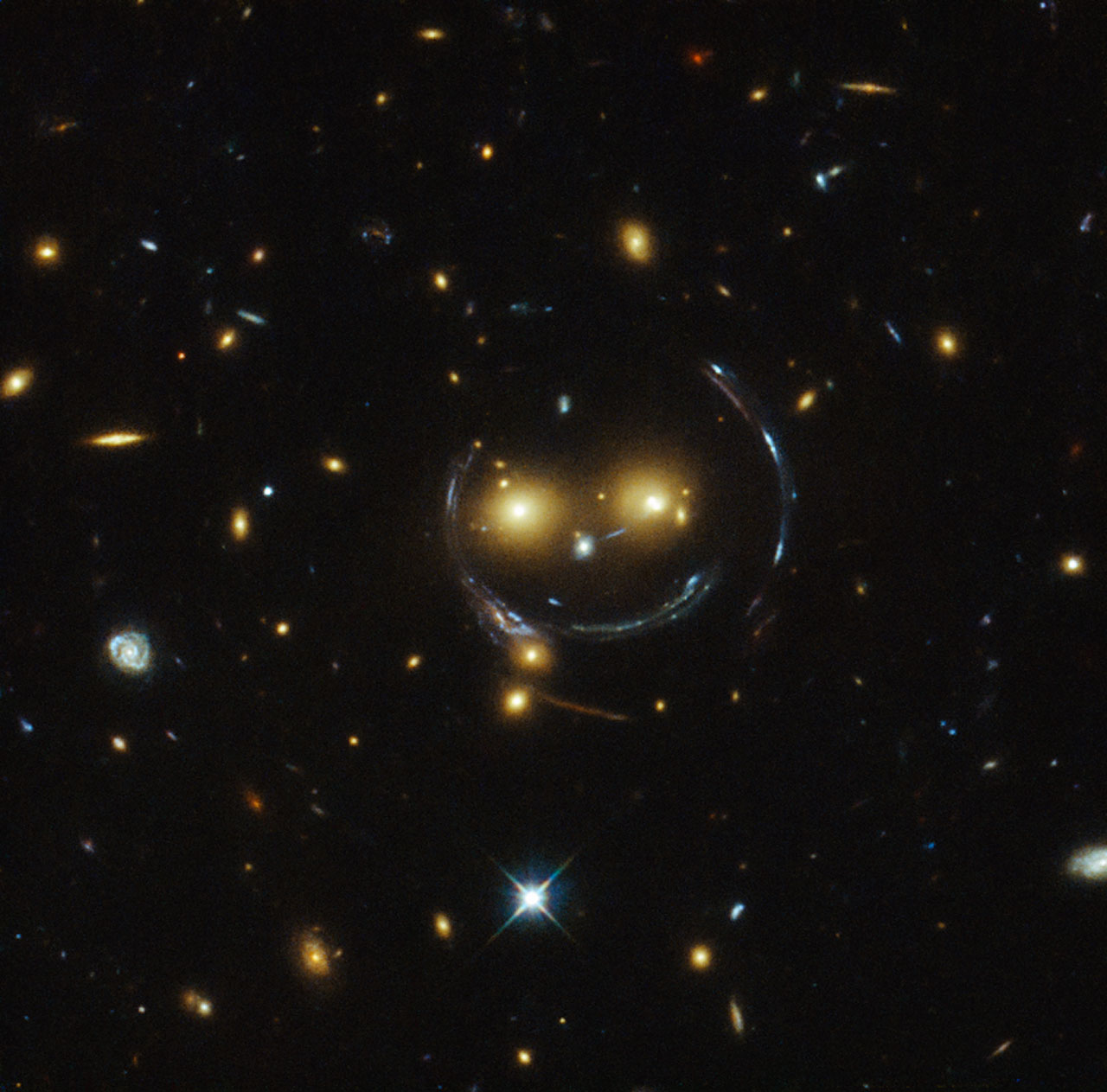> kobalts
jā. tā tiešām ir. tikai bez mistikas

novērtējot tālo galatiku sarkano nobīdi un lēcas izkropļoto attēlu, var spriest par matērijas daudzumu, kas atrodas starp mums un tālajām galaktikām. tai skaitā tumšo matēriju, tās formu un daudzumu.
no 2008.gada publikācijas par šo pašu objektu
Two New Large Separation Gravitational Lenses from SDSS (V.Belokurov, N.W.Evans, P.C.Hewett, A.Moiseev, R.G.McMahon, S.F.Sanchez and L.J.King, 2008)

- 0806.4188v2_f4a.jpg (170.09 KiB) Viewed 12771 times
citāts no publikācijas...
CSWA 2, “the Cheshire Cat”, is a complex system in which there are two lensing galaxies and at least two sources. The Cat’s eyes are the lenses, namely two massive early-type galaxies at z=0.426 and 0.432 respectively, whilst the Cat’s nose is a fore-ground galaxy that has minimal lensing effect. The two sources are a star-forming galaxy at z=0.97 and a high redshift galaxy (z>1.4). They are transmogrified by gravitational lensing into giant arcs which form the Cat’s smile and eyebrows. The mass enclosed within the larger arc of radius ~11" is ~33×10^12 M⊙, greater than the Local Group!ar "early-type" šeit jāsaprot milzīgas eliptiskās (ne spirāl-) galaktikas. turklāt jāņem vērā, ka tās ieskauj ievērojams tumšās matērijas halo. (cydonia)
Images A, G, and probably B, are produced by a source at redshift z=0.97, whilst D, F, and most likely C and E, are at a higher redshift.The positions of the images of the higher redshift source, C, D, E and F, are all reproduced. The total magnification is 45±7, with C and D as the brightest images (magnifications of 15.9 and 14.2) followed by E and F (magnifications of 7.1 and 5.1). There is also a predicted faint counterimage at ∆α≈−13′′, ∆δ≈1′′ with a magnification of 3.1 and, of course, a highly demagnified central image. For the lower redshift source, the image locations of G, A and B are reproduced. The predicted respective magnifications are 3.9, 3.6 and 1.3, which is in reasonable accord with the relative brightness of the images in Figure 4. There is a bright counterimage with a magnification of 4.3 offset from the centre by ∆α≈−4′′, ∆δ≈4′′. The predicted counterimage is close to the location of the lensing galaxy L2, which may render its detection difficult. The total magnification of the z=0.97 source is ~14±4.


